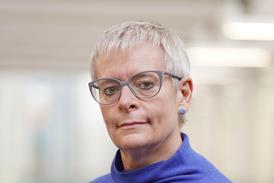Accord shares how cardiovascular risk impacts long-term patient outcomes in cancer care and how many survivors are at an increased risk of CVD due to the treatments themselves
A recent HSJ/Accord forum revealed a crucial, yet overlooked, factor in cancer care – cardiovascular risk impacts long-term patient outcomes. Heart disease remains a leading cause of death in the UK, and cancer patients are not exempt.1 In fact, cancer survivors face a 42 per cent higher risk of developing incident cardiovascular disease (CVD) compared to individuals without a cancer history.2
Sponsored and written by
While advancements in cancer treatment have improved survival rates, many survivors are at an increased risk of CVD due to the treatments themselves.3 Many standard cancer therapies, including androgen deprivation therapy, Human Epidermal Growth Factor Receptor 2 (HER2) inhibitors, anthracyclines and immune checkpoint inhibitors, are associated with an increased risk of CVD in long-term survivors, with about one-third of patients undergoing cancer treatment experiencing cardiotoxicity.3,4 Despite this, these risks are seldom assessed or managed in clinical practice, potentially leading to preventable cardiac events.5
Primary and secondary care: a shared responsibility
Siva Tharshini Ramalingam, who led the HSJ/Accord session, underscored the need for personalised cardio-oncology strategies that integrate CV risk assessment and prevention into clinical practice. The forum emphasised that collaboration across primary and secondary care could mitigate potential harm from a heightened CV risk. Oncologists should recognise comorbidities while primary care manages CV risk factors during and after treatment, considering cardioprotective medications when appropriate.
A cancer lead in an integrated care system noted that CV health must be “on the radar from the very start”. Each cancer patient should undergo a heart health check and CV risk assessment at diagnosis. Dr Ramalingam highlighted that breathlessness in cancer patients should prompt natriuretic peptide testing to detect early signs of heart failure. Early detection enables timely referrals and helps patients stay on cancer therapy without interruption.5,6
A GP attending the forum stressed the importance of communication. Cancer survivors often return to GPs for long-term follow-up, and without knowledge of prior cardiotoxic treatments, GPs may miss critical opportunities for heart monitoring. Therefore, clear shared care protocols and timely handovers are essential, particularly given that an estimated 3.5 million people in the UK are currently living with cancer.7
Integrated models: emerging best practice
The movement toward ICSs presents a valuable opportunity to bridge care gaps. At the Royal Brompton Hospital, a cardio-oncology multidisciplinary team (MDT) includes cardiologists, oncologists and a GP to ensure high-risk patients are reviewed from the outset. “By breaking down the silos, we have prevented delays and improved patient outcomes,” said Dr Ramalingam. Collaboration ensures, for instance, that patients with pre-existing CVD receive tailored plans before starting potentially cardiotoxic chemotherapy. Survivorship clinics can then co-design follow-up plans for ongoing CV monitoring.
While this MDT approach has improved clinician confidence and patient experience, wider implementation requires leadership, funding and systemic change.
The case for baseline CV risk assessment
A strong consensus emerged at the forum: baseline CV risk assessment should be standard in cancer diagnosis and treatment planning, with 99 per cent of attendees agreeing this should become routine practice.
This aligns with the 2022 European Society of Cardiology (ESC) cardio-oncology guidelines, which recommend baseline CV risk stratification for all cancer patients.8 The Heart Failure Association and the International Cardio-Oncology Society (HFA–ICOS) risk assessment tool aids clinicians in classifying patients into risk categories based on treatment and health history, enabling the design of preventive strategies and surveillance plans from the beginning of care.9
Breaking down silos in the NHS
Better outcomes in cardio-oncology are not only about clinical strategies – they require structural changes in the NHS. Historically, cancer and cardiac services have operated separately, with different funding and referral pathways. Dr Ramalingam called this “no man’s land,” whereby patients can fall between the cracks.
For example, a cancer patient discharged from oncology might not receive a follow-up plan for CV health, despite undergoing cardiotoxic treatment. Conversely, cardiology teams may treat heart failure in cancer survivors without understanding their oncology history.
Encouragingly, the forum highlighted a growing culture of collaboration. “The patient doesn’t care which silo we come from,” one participant said, “they just want us to keep them well.”
Alexander Lyon, director of the Cardio-Oncology Centre of Excellence at the Royal Brompton Hospital, warned of an emerging cardio-oncology epidemic driven by ageing populations and increasing survival rates.10 Without systemic integration, we risk seeing avoidable cardiac-related deaths in cancer survivors.10
Policy implications: towards personalised, preventive care
For policymakers and healthcare leaders, the key takeaway is that CV health must be integrated into the entire cancer care pathway. This is not about increasing workloads but shifting to a proactive model that saves lives and preserves cancer survival gains.
Ignoring CV risks may result in more cancer survivors presenting to accident and emergency with advanced heart failure or suffering preventable deaths.11 Integrating CV risk assessments and monitoring into cancer care may help patients complete their treatment and live longer, healthier lives.12
Ultimately, optimising patient outcomes necessitates not only new treatments but a system that protects patients’ hearts during cancer care. The HSJ/Accord forum made clear that frontline clinicians are ready to deliver this kind of holistic care. What is needed now is national support to embed these changes system-wide.
Job bag number: UK-Onc-Org-01893
Date: May 2025
References
1 British Heart Foundation. UK Factsheet. January 2025. Available at: https://www.bhf.org.uk/-/media/files/for-professionals/research/heart-statistics/bhf-cvd-statistics-uk-factsheet.pdf (Accessed May 2025).
2 Florido R, et al. JACC. 2022;80(1):22–32.
3 Aleman BMP, et al. EJC Suppl. 2014;12(1):18–28.
4 López-Sendón J, et al. Eur Heart J. 2020;41(18):1720–1729.
5 Wu HT, et al. Vis Cancer Med. 2025;6(1).
6 White J, et al. Cardiooncology. 2022;8:14.
7 Macmillan Cancer Support. Statistics fact sheet. February 2025. Available at: https://www.macmillan.org.uk/dfsmedia/1a6f23537f7f4519bb0cf14c45b2a629/19886-10061/Macmillan-cancer-statistics-fact-sheet-January-2025 (Accessed May 2025).
8 Lyon AR, et al. Eur Heart J. 2022;43(41):4229–4361.
9 Butel-Simoes LE, et al. Eur Heart J. 2025;46:285–287.
10 European Society of Cardiology. Heart-related side effects of cancer treatment must be addressed as early as possible. 2024. Available at: https://www.escardio.org/The-ESC/Press-Office/Press-releases/heart-related-side-effects-of-cancer-treatment-must-be-addressed-as-early-as-pos (Accessed May 2025).
11 Kobo O, et al. Int J Cardiol. 2022;363:210–217.
12 Sharma R, et al. Cureus. 2023;15(12):e51038.


























